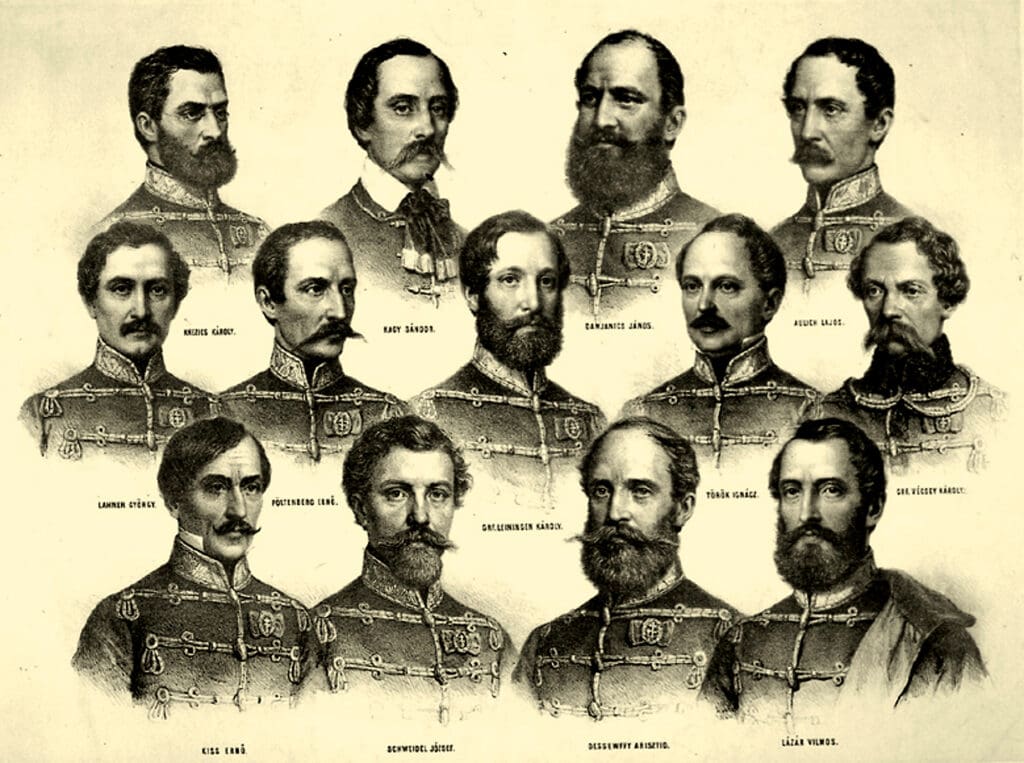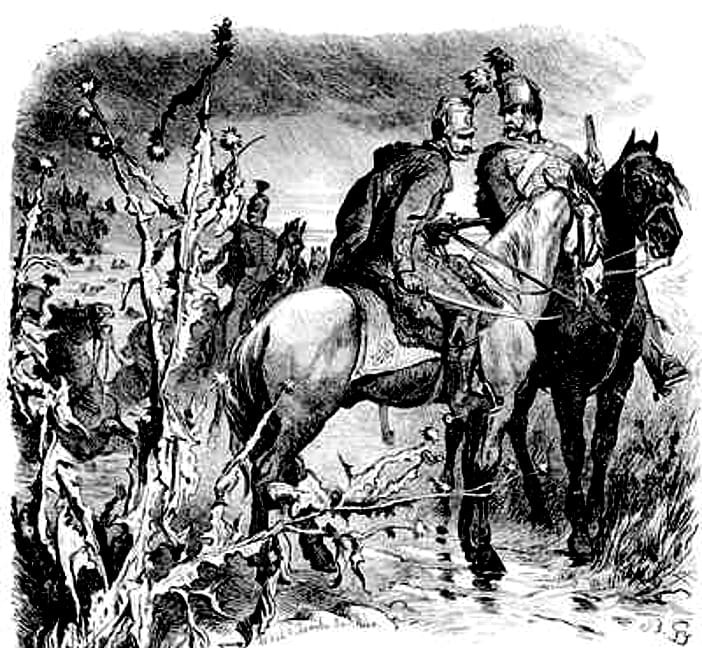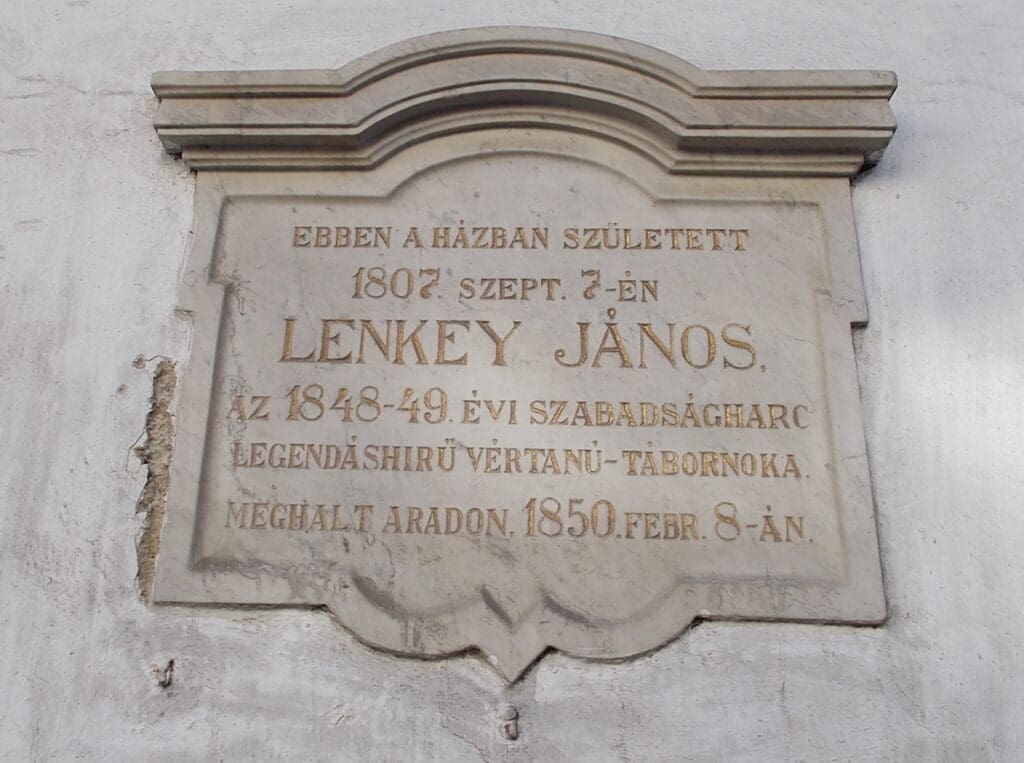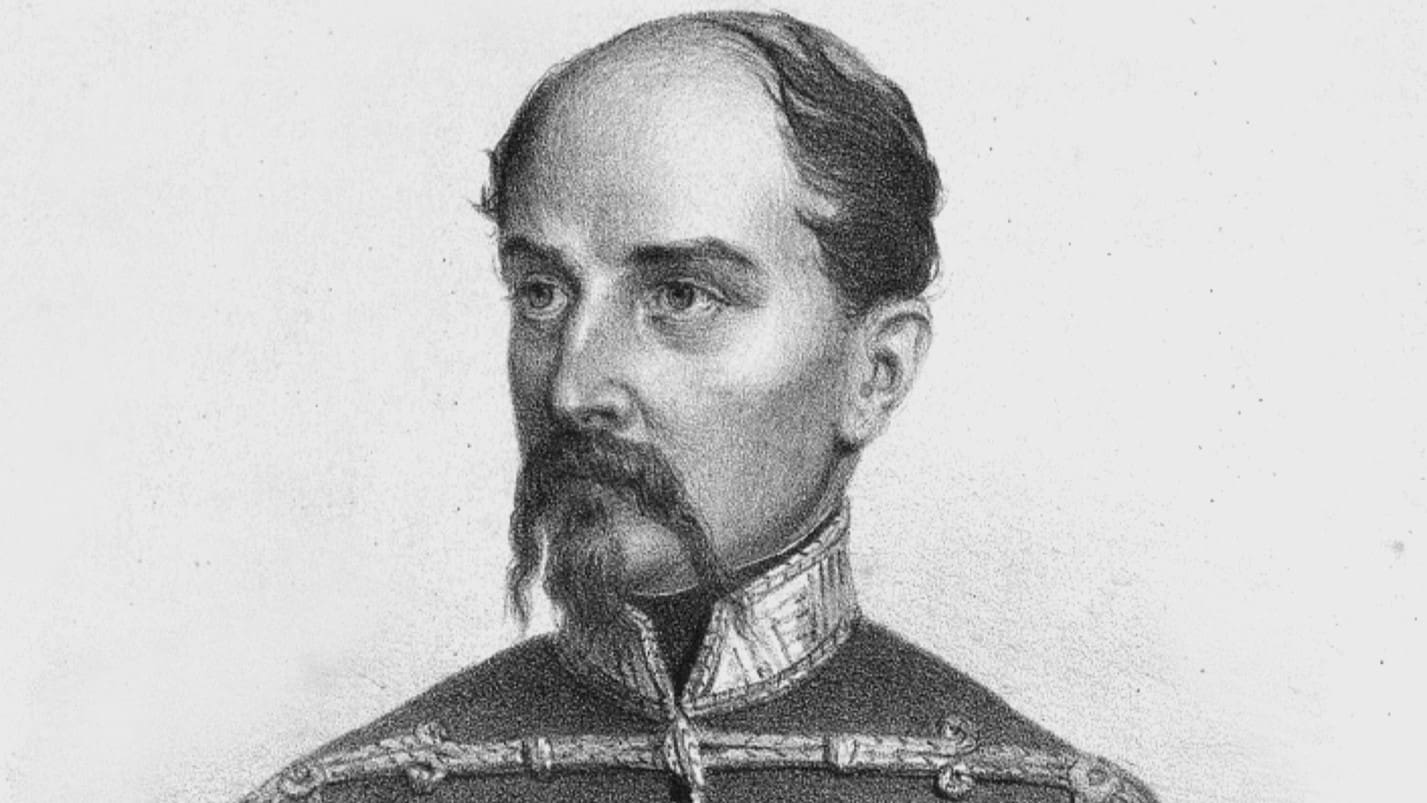Hungary commemorates the martyrdom of the ‘Arad 13’ every year on 6 October. The 13 generals of the 1848–49 Hungarian War of Independence were executed upon orders from Jacob von Haynau in 1849.
The Hungarian revolution and freedom fight is a glorious chapter of Hungarian history, even if it was ultimately crushed by the joint forces of the Habsburg and the Russian Empires. On 13 August 1849, the Hungarian forces surrendered near the town of Világos, ending the War of Independence. This also meant the annulment of the revolution’s legal achievements, condemning Hungary to almost two decades of Habsburg absolutism. The imperial court named Julius Jacob von Haynau, a general notorious for his cruelty, as the military governor of Hungary. During the autumn, he saw to it that bloody revenge be taken on the rebels.
The retribution was so excessive that it led to widespread condemnation from all over Europe.
Haynau did not only target the political, but also the military leadership. For him, all soldiers who defended Hungary from the foreign invasion were guilty of high treason against the emperor. Thus, he wanted to see at least the most high-ranking generals dead.
The ’Arad 13’ and a Forgotten Martyr
One of the most notorious episodes of Haynau’s terror was the mass execution of 13 generals of the revolution. The condemned officers included János Damjanich, the victorious commander of the so-called ‘glorious spring offensive’, and other successful military leaders. Eleven of them were executed by hanging, considered a shameful way of dying at the time, especially in the case of soldiers. Arisztid Dessewffy and two other aristocrats were allowed to die before a firing squad.

The ‘Arad 13’ have become iconic figures in Hungary’s historical pantheon. However, many feel it is unjust that other executed officers are often forgotten. The title of the ‘fourteenth martyr of Arad’ is widely contested—and it must also be noted that Lajos Batthyány, the first prime minister of Hungary, executed on the very same day, is usually mentioned together with the 13 generals. This article recounts the tragic story of János Lenkey, the officer who perhaps is the most worthy of the title.
Life and Military Career of János Lenkey
Lenkey was born in 1807 in Eger, to a gentry family. Upon graduating from military academy, he became a career soldier in the Austrian army, serving as a cavalry officer from 1822 to 1848. Upon the outbreak of the Revolution and Freedom Fight of 1848–49, Lenkey and his unit were stationed in Polish Galicia (under Habsburg rule at the time). His Austrian superior instructed him to quell the ensuing Polish national uprising, which order Lenkey defied. To escape this situation, he decided to leave Galicia, and,
together with his whole unit, defect to the Hungarian rebels.
As Hungary was still nominally part of the Habsburg Empire, this action caused diplomatic tensions. The imperial government demanded the punishment of the defectors, while the Hungarian public celebrated Lenkey and his hussars for siding with the forces fighting for Polish and Hungarian national independence. To resolve the situation, the Ministry of War sent Lenkey and his troops to Southern Hungary to fight Serbian rebels. Therefore, during the war, Lenkey mostly saw action in this region, where he led his cavalry unit, known as the ‘Lenkey Hussars’.

As he was very successful in the campaign against the Austrian-backed Serbian forces in the area, he was soon promoted to colonel and was given command of a full regiment. In this capacity, he was also in charge of the guerrilla units of the legendary outlaw, Sándor Rózsa. Lenkey continued battling Serbian and later regular imperial troops,
and was eventually promoted to the rank of general by Lajos Kossuth,
the prime minister, and later governor of Hungary. After this, therefore, from the spring of 1849, he oversaw the defence of the fortress of Komárom. He supervised the fortifications of the stronghold dutifully, however, as a cavalry soldier, he was not qualified to defend a fortress. Lenkey was therefore relieved of his duties in Komárom and was instead designated as commander of a new cavalry unit. However, due to a mysterious mental illness that he developed during this period, Lenkey soon became incapacitated and did not see battle again until the Hungarian surrender at Világos in August.
A Bitter End
Upon the surrender, Lenkey became a prisoner of war of the Russian Empire, but the Russians, similarly to all the other generals in their captivity, extradited him to Austria. During the autumn, Lenkey was court-martialled together with the ‘Arad 13’. It is unclear whether he was sentenced to death and deemed unfit for execution or sentenced to life imprisonment due to his mental state, but what we know is that he was imprisoned in the dungeon of the Arad (today, Arad in Romania) fortress.
By that time, he had fully succumbed to his mental illness: he had violent episodes during which he attacked prison guards. On other occasions, Lenkey stripped himself naked and destroyed the furniture of his cell. When he was relocated to a dark, cold, and empty cell, he also ransacked the stove, so he was left without hearing as well. His abysmal condition was only worsened by the regular beatings by the guards, who would occasionally even stab him with their bayonets. His festering wounds left untreated, lingering in an unheated cell, battling a grave mental illness Lenkey’s fate was sealed. He passed away on 8 February 1850. The general was buried in Arad, but later reburied in Eger, his hometown, where a commemorative plaque in his tribute also keeps his memory alive.

Conclusion
Lenkey is an undeservedly forgotten hero of the War of Independence. Not only was he truly a martyr of the reign of terror, but his fate was arguably even more horrible than that of the ‘original’ 13 generals. While the Lenkey Hhussars are well-known and celebrated as collective heroes, and it can be said that as their commander, even Lenkey himself is not forgotten, his fate as martyr is usually ignored.
He chose not to conform but rather took risky steps to follow his conscience,
rather than the chain of command. Lenkey suffered a terrible fate for his bravery, making him no less of a martyr than the others executed at Arad. It is important to honour his legacy and uphold it as an example of heroism and patriotism.








